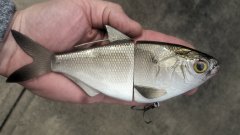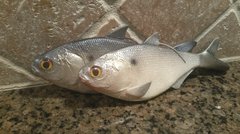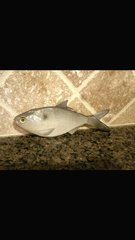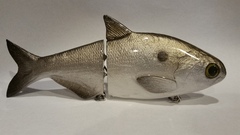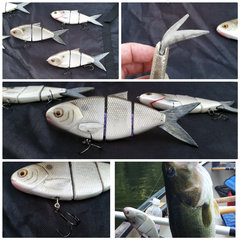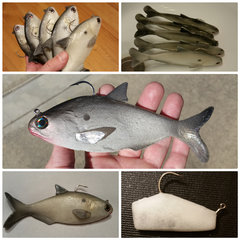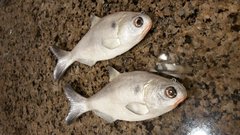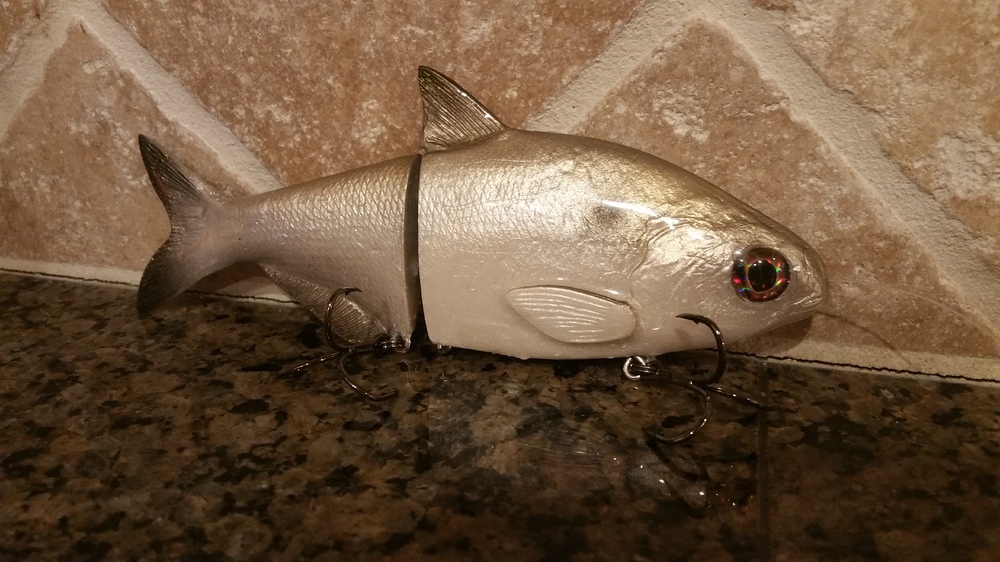
rhallman
TU Member-
Posts
18 -
Joined
-
Last visited
-
Days Won
1
Content Type
Profiles
Articles
TU Classifieds
Glossary
Website Links
Forums
Gallery
Store
Everything posted by rhallman
-
I have struggled with the same problem for a long time. Fast cure does not allow degassing so what do you do. If you are using urethane resins like RC3, store in the driest place you can. Moisture is a killer and will cause a lot of bubbles. I have seen that firsthand. Older resins that have been open for awhile produce way more bubbles than resin just opened/unsealed. Next solution sounds like BS but has helped me big time. Put baby powder in the mold first, close it and shake. Open the mold and let the powder out. I usually slap the two sides together to get it out. This should leave a really light coat of powder in the mold. Now pour you resin. You may still see the bubbles but most will be just under the surface and not popped on the surface. My baits are not perfect, but this reduced surface popped bubbles by about 90%.
-
-
-
Update and hard lesson learned. You cannot clean a mold that's had plastisol poured in it and then pour a platinum silicone bait. One plastisol pour bait, then cleaned with soap and hot water, then multiple acetone cleanings. No help. It's either a plastisol mold or a silicone mold. Can't be both.
-
Just experienced the same thing. I was making a Mold Star 30 mold to pour both plastisol and platinum silicone swimbaits. Mold came out great (original made from resin). Poured a plastisol bait, then after using ample mold release made for platinum silicone, I poured Ecoflex silicone in the same mold. Big mistake. Only the inner cured. The outer touching the mold was a total mess. I am experimenting to make sure it is not the release, but I am certain it's due to the plastisol. Platinum silicone is extremely sensitive. Just did not know it was sensitive to plastisol. Tin based like Mold Max 30 is great. Not nearly as sensitive. Thanks for bringing this up.
-
-
Gizzard shad three section hard swimbait. Original cast made from balsa, sculpey and plenty of patience. Molded with Smooth-On Mold Max 30. This is a resin lure made with Alumilite RC3. I have made multiple versions of this lure focusing on two types; First includes two hooks with and embedded Spro swivels instead screw eyes to reduce leverage during the fight. Second type is a line thru design with one or two hooks. Hooks are held in with screw eyes inserted into embedded rubber tubing that easily pops free during the hook set. All have replaceable super soft plastic tails that bring the bait to life, much better than silicon or rubber. I tried them all. I have settled on the line thru single front #2 Owner treble as the design of choice. Hookup ratio still high while avoiding the back hook from hooking into the fish's side or eyes. All painted with Wicked and finished with 3 coats of Etex.
-
GIzzard shad. 5/0 Gamakatsu hook embedded in weighted foam harness for swimbait to sit upright at rest. Harness covered with bondcoat to prevent slippage. 10mm Living eyes. Wedge tail with excellent action at slow retrieve. Painted with Lureworks SB including holographic glitter. Made from real shad replica and Sculpey molded with Smooth On Mold Max 30.
-
-
-
-
-
-
Thanks guys for the time and feedback. I did not used to clean with dawn. However, after a couple of separations, I figured it needed to be super clean. I have tried cleaning with acetone as well in the past. Lately I've been using Alumilite RC3 just because it's easy to get at Hobby Lobby and made a lure, that after about 5 days of casting, I noticed the blister in a spot. I have never only used one coat of Etex and I have never thought of putting the base coat in the mold. I might have to give these a shot. I need to try the lacquer primer as well. I never use mold release and do thoroughly rinse after washing. Just a pic of the latest creation. I'm sure this one will eventually blister as well if I don't lose it first. Thanks again.
-
Need a little help. I have been making hard swimbaits for a couple of years and I have certainly gone through the school of hard knocks on trial and error like everyone else. The one area in which I still struggle is painting, specifically paint eventually separating from the lure body after usually extended use. I use Alumlite resin but have tried others as well. All the same. I airbrush mostly with Wicked and Wicked Detail but have tried Createx and Spike It paints. I have used base coats of spar, acrylic latex, topcoats from these airbrush companies and sometimes no true base coat. I finish my lures with Etex, usually 3 coats. Results always look impressive, but give it time and eventually I will see spots of separation between the body and the paint under the Etex. These are not lures exposed to excessive heat. I have seen that cause blistering firsthand. I thoughly was the lures with dawn before painting. Anyone have any tip? Much appreciated.
-
I've been making some hard swimbaits and am trying to move into making large soft plastic swimbaits. I am new to plastic pouring. Made a prototype, poured the RTV mold with the opening/sprue on top in front of the dorsal fin. This is a hand pour. I have had plenty of issues dealing with air bubbles and shrinkage. I think I have solved the air bubble issue, but shrinkage in the mold is deforming the bait. I am standing by to make sure it is topped off as it shrinks. I am pouring very slowly. I have tried every way under the sun between pour speed, heat, plastic hardness/softness, wait time before removing from the mold and cannot figure it out. I want to take the leap to an injector, but doubt that will help. Please take a look at the picture to see how it is deforming. Anybody have any experience and insight into why this is happening and how to stop? Many thanks.



